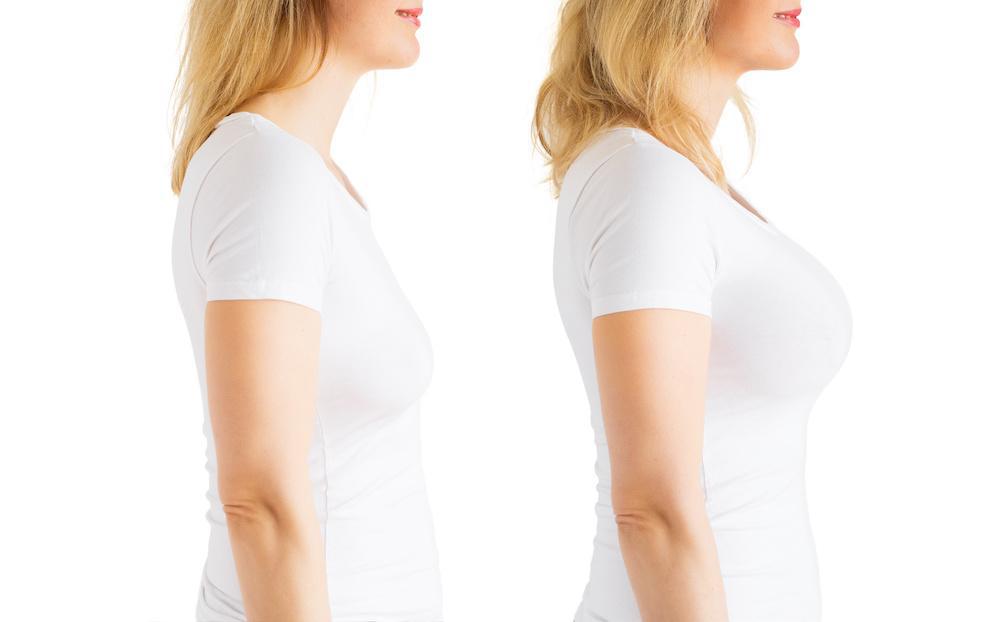Considering Breast Augmentation? Here’s What You Need to Know

At Dr. George Brennan’s Cosmetic Surgery and Medical Spa in Newport Beach, we understand the importance of personalized care. Every woman’s body is unique, and our experienced surgeons are committed to ensuring you achieve the best possible results that align with your expectations. We’ll walk you through the entire breast augmentation journey, covering all aspects of the procedure, implants, recovery, and more.
What Is Breast Augmentation?
Breast augmentation involves using implants to increase the size and alter the shape of the breasts. Women opt for this procedure for various reasons. Some want to restore breast volume after significant weight loss, pregnancy, or breastfeeding. Others may wish to correct breast asymmetry, enhance body proportions, or desire fuller breasts. Whatever the motivation, breast augmentation is designed to help women achieve their aesthetic goals.
The procedure usually involves inserting silicone or saline implants through a small incision made in inconspicuous areas to minimize visible scarring. During your consultation, your surgeon will discuss the best options for implant placement and size, ensuring the final results meet your needs.
Types of Breast Implants
There are two main types of breast implants to choose from silicone implants and saline implants. Each type has advantages, and the choice depends on several factors, including your desired breast size, shape, and feel.
- Silicone Implants: These are filled with silicone gel and are known for offering a more natural appearance and feel. Many women prefer silicone implants because they mimic the natural consistency of breast tissue. However, silicone implants require more extensive incisions during the surgery, and regular monitoring through mammograms or MRIs is recommended to check for potential ruptures.
- Saline Implants: Filled with sterile saltwater, saline implants offer a slightly firmer appearance. They are inserted empty and then filled once placed inside the body, allowing for smaller incisions. If a saline implant ruptures, the body naturally absorbs the salt water, making detection straightforward. While they may not feel as natural as silicone implants, saline implants remain a popular choice for many women.
Implant Placement and Size
The placement of the implants is another critical factor that can affect the final appearance of your breast augmentation. The implants can be placed either above the muscle (sub-glandular) or below the muscle (submuscular), and your surgeon will recommend the best approach based on your body’s body and your desired outcome.
- Subglandular placement: The implants are positioned on top of the chest muscle, directly behind the breast tissue. This procedure often results in a faster recovery time and may be more suitable for women with enough natural breast tissue to cover the implants.
- Submuscular placement: In this technique, the implants are placed under the chest muscle, which can provide a more natural look for women with less breast tissue. Submuscular placement often reduces the risk of capsular contracture (a condition where scar tissue forms around the implant). It can offer more long-term benefits in terms of appearance and durability.
In addition to placement, selecting the right implant size is essential. During your consultation, your surgeon will help you determine the appropriate implant size based on your body’s movements, ensuring your new look feels natural and complements your figure.
The Breast Augmentation Procedure
A breast augmentation surgery typically takes one to two hours to complete. The surgeon begins by making an incision in one of three common locations: along the breast fold (inframammary), around the areolas (periareolar), or in the armpit (transaxillary). The type of incision will depend on your anatomy, the chosen implant, and the desired appearance.
Once the incision is made, the implant is inserted into the breast tissue. The surgeon carefully positions the implants to achieve the most aesthetically pleasing result. After the implant is in place, the incisions are closed with sutures or surgical tape, and healing begins.
Post-Surgery Recovery
After breast augmentation surgery, most patients experience some swelling, bruising, and discomfort, which are standard parts of the healing process. Your doctor will provide detailed post-operative instructions, including how to care for your incisions, manage swelling, and monitor for any signs of complications like infection or bleeding.
Recovery times can vary, but most women can return to normal activities within a week or two. However, it’s essential to avoid strenuous exercise and heavy lifting for several weeks to allow the breasts to heal properly. The final results of the surgery will become more apparent as the swelling subsides, typically within a few months.

Risks and Complications
Like any surgical procedure, breast augmentation comes with certain risks. While complications are rare, it’s essential to be aware of the potential issues that can arise, including:
- Capsular contracture occurs when scar tissue forms around the implant, causing the breast to feel stiff or misshapen. In severe cases, additional surgery may be needed to correct the issue.
- Rupture: Both silicone and saline implants can rupture, though saline ruptures are more easily detectable as the body absorbs the saline. Regular check-ups and mammograms help detect any implant ruptures early.
- Infection: As with any surgery, there is a risk of infection, which can occur in the days or weeks following the procedure. Infections are typically treated with antibiotics but may require surgical intervention in severe cases.
- Breast implant illness (BII): Some women report experiencing symptoms such as fatigue, joint pain, and cognitive issues after receiving breast implants, a condition known as breast implant illness. While the exact cause of BII is not fully understood, it is essential to discuss any concerns with your surgeon.
- Capsular contracture: As mentioned earlier, this complication involves the formation of scar tissue around the implants, leading to hardening or distortion of the breast. Early detection and treatment are crucial in managing this condition.
Communicating openly with your surgeon to address any concerns and minimize risks is essential. Dr. George Brennan and his team prioritize patient safety and are committed to providing the highest standard of care throughout your breast augmentation journey.
Breast Augmentation and Breast Cancer
There is often concern about the relationship between breast implants and breast cancer detection. While breast implants do not cause breast cancer, they can interfere with mammogram readings, making it more challenging to detect certain types of breast cancer. This is why it’s essential to work with a radiologist experienced in imaging women with implants.
Women with a family history of breast cancer or other risk factors should discuss their options thoroughly with their plastic surgeon and oncologist. In some cases, additional screening methods may be recommended to ensure comprehensive breast cancer detection.
Breast Lift and Reconstruction Options
In addition to breast augmentation, many women opt for a breast lift (mastopexy) to correct sagging breasts. A breast lift can be performed alongside augmentation to achieve a more youthful appearance by lifting and reshaping the breasts. This is particularly common for women who have experienced significant changes in breast shape due to aging, pregnancy, or weight loss.
For women who have undergone a mastectomy due to breast cancer, breast reconstruction is an option to restore the appearance of the breasts. Breast reconstruction may involve the use of implants, fat transfer, or other surgical techniques to recreate a natural look. Dr. George Brenna Brennan’s experience in cosmetic and reconstructive procedures provides comprehensive care for patients at all stages of their breast journey.
The Consultation Process
A detailed consultation is essential before deciding on breast augmentation. You discussed your goals, expectations, and concerns with Dr. George Brennan during your consultation. This is the time to ask all your questions about implants, risks, recovery, and complications.
You’ll undergo a physical examination to determine your ideal implant size, placement, and type. The consultation process helps ensure that you and your surgeon are aligned in achieving the best possible outcome for your body.
Enhancing Confidence with Breast Augmentation
Ultimately, breast augmentation is about helping you feel more confident in your body. Whether you want to restore lost volume, improve symmetry, or enhance your figure, this procedure can have life-changing effects. Many women report feeling more comfortable in their clothing and more satisfied with their overall appearance after undergoing breast augmentation.
Dr. George Brennan and his team at the Cosmetic Surgery and Medical Spa in Newport Beach are dedicated to helping you achieve your aesthetic goals. With decades of experience and a commitment to excellence, our practice is ideal for breast augmentation.
Ready to begin your journey? Contact us today to schedule your consultation and take the first step toward enhancement of your confidence with breast augmentation.
Visit Dr. George Brennan, Cosmetic Surgeon & Medical Spa, to learn more about our services and schedule an appointment. We look forward to guiding you to a more confident, beautiful you.
You Might Also Enjoy…
Age Significantly Impacts Rhinoplasty Candidacy and Surgical Outcomes
Age Significantly Impacts Rhinoplasty Candidacy and Surgical Outcomes Age plays a significant role in rhinoplasty candidacy. While rhinoplasty, a procedure more commonly referred to as a nose job, is a popular facial plastic surgery for improving nasal shape,...
Exercise After Rhinoplasty: Safe Tips for Recovery
Exercise After Rhinoplasty: Safe Tips for Recovery Undergoing rhinoplasty is a life-changing decision that requires careful post-surgical care. Proper recovery ensures optimal results while minimizing swelling, discomfort, and potential complications. Dr. George...
Is Mini Facelift Recovery the Same as Full Facelift Recovery?
Is Mini Facelift Recovery the Same as Full Facelift Recovery? As we age, the face is one of the first areas to show visible signs of aging. Sagging skin, wrinkles, and volume loss in areas such as the cheeks, jawline, and neck can significantly affect one's...
What to Expect 3 Weeks After Rhinoplasty
What to Expect 3 Weeks After Rhinoplasty Rhinoplasty, commonly known as a nose job, is a surgical procedure that alters the shape or improves the function of the nose. Whether performed for cosmetic reasons or to correct a functional issue like a deviated septum,...
Neck Lift vs. Facelift: Which One Is Right for You?
Neck Lift vs. Facelift: Which One Is Right for You? Regarding facial rejuvenation, whether to undergo a neck lift or a facelift can be confusing for many patients. Both procedures are designed to improve your appearance by addressing the visible signs of aging, but...
What to Expect During Your First Rhinoplasty Consultation
What to Expect During Your First Rhinoplasty Consultation If you're considering rhinoplasty surgery, the first important step is scheduling a consultation with a qualified nose surgeon. This initial meeting allows you to discuss your questions, concerns, expectations,...






